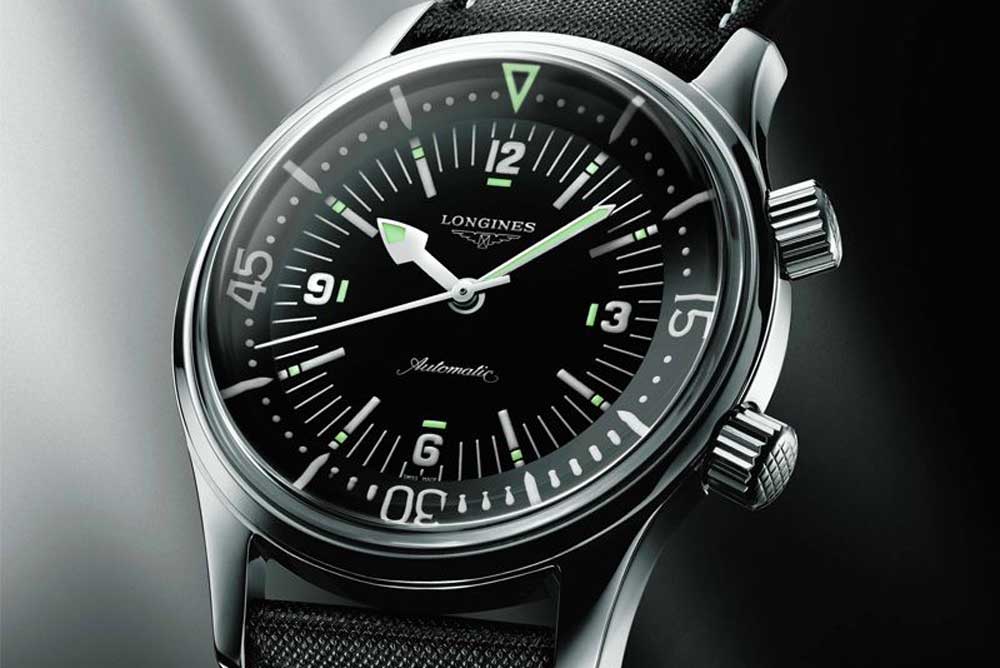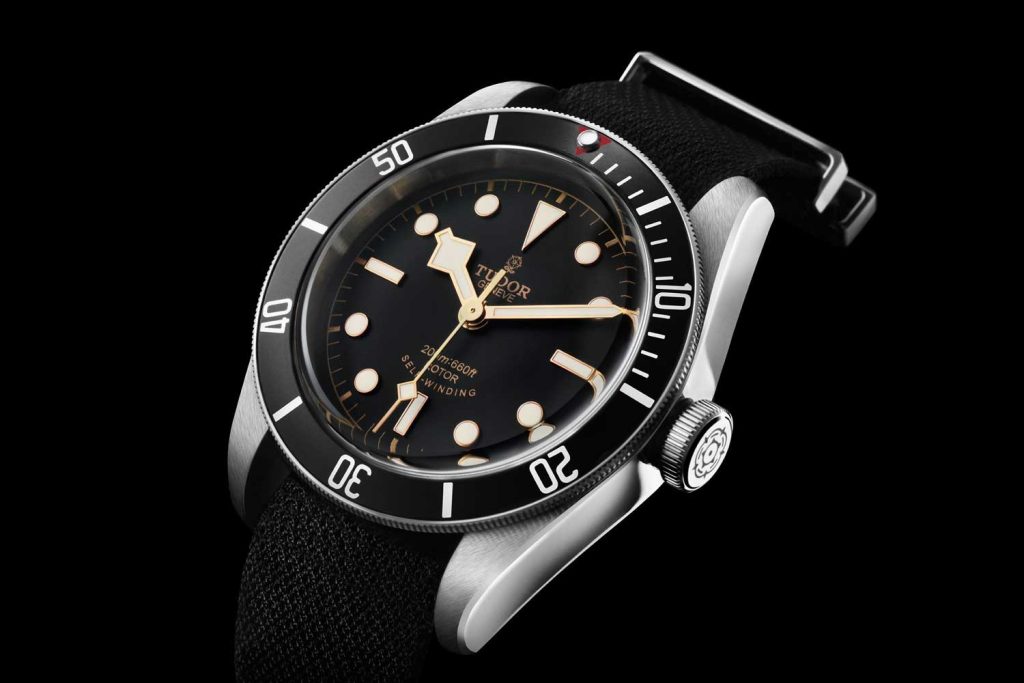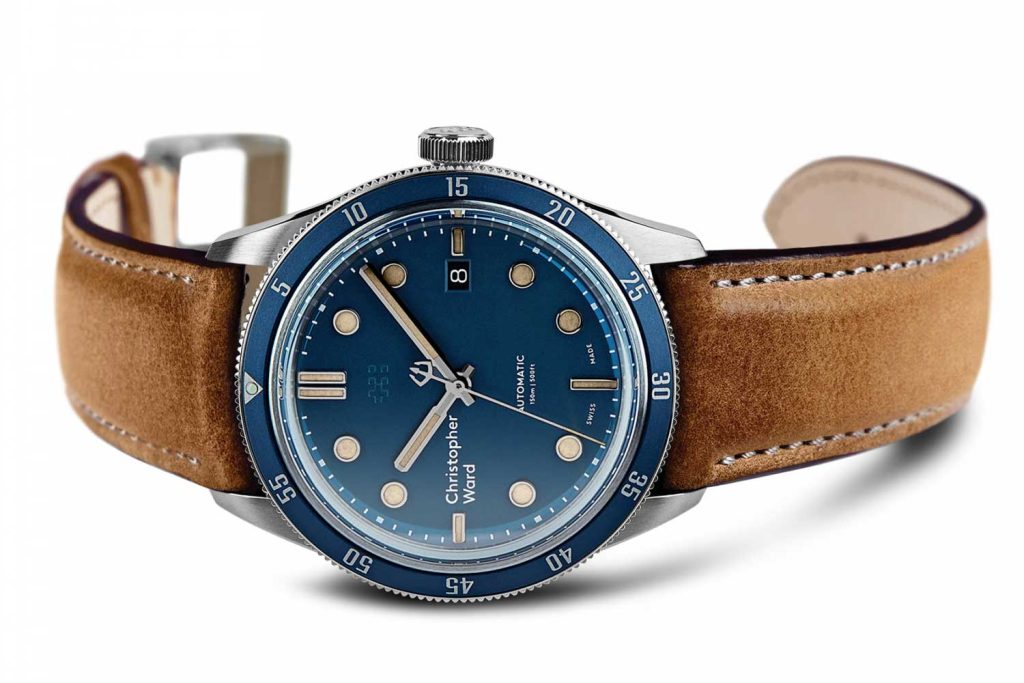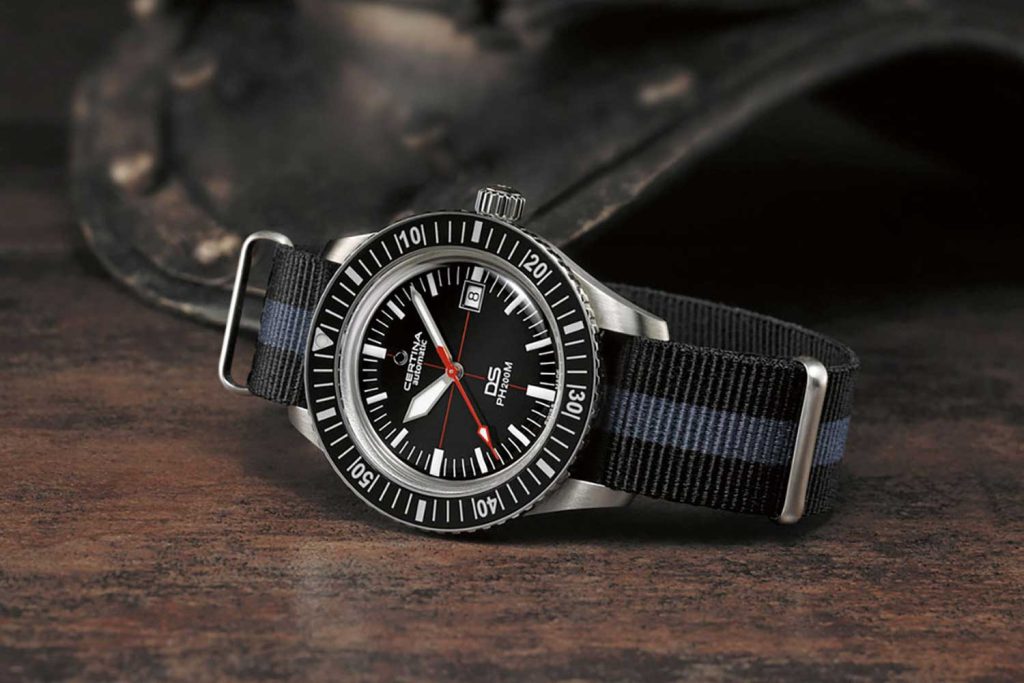Certina
The Dive Master
Whenever a new trend emerges it is hard to resist the temptation to accuse the watch brands of some form of “collusion”. When we remind ourselves how long it takes the molasses-slow organism that is the Swiss watch industry to put things into production, we have to ask ourselves: how do so many brands arrive simultaneously at Baselworld or SIHH with blue/green/brown dials? Big dates? Over/under straps? Bronze cases?
We also know, it must be emphasized, that the watch brands, however competitive they appear, have always co-operated to some degree behind the scenes, so conspiracy theories are easy to feed. We are, admittedly, talking about civilized ladies and gentlemen who turn up at the same bars after hours and sit and schmooze. They all know each other, because the watch industry is formed of a tightly-knit community that sees people changing companies the way Californians wife-swapped in the 1970s.

Not so innocent: a bowl of car keys, from Lee Ang’s 1997 film, The Ice Storm
As I am trying to mellow, I would like to give them the benefit of the doubt and turn to that riskiest of excuses: coincidence. I remain baffled by the profusion, in particular, of reissues of classic diving watches, which are big seasonal buys.
The angel on my right shoulder says: “Accidental!” But the devil on my left shouts: “Collusion!” We are not talking about anything nefarious, nor even suspect, but it does make for great conversation when a group of watch nuts gather.
This minor concern aside, I am not complaining, merely commenting. I absolutely LOVE the plethora of returning diving classics, despite never getting my watches wet. I acquired my Panerais over 20 years ago, not suspecting for a second that the mid-1990s revival of this brand would be the harbinger of a stampede. But I succumbed to it and ordered my Longines Legend Diver when it was announced at Baselworld 2007, did the same for last year’s killer from Certina – the bargain-of-the-decade DS PH200M – and also grabbed a Tudor Black Bay Black last year.

Longines Legend Diver

Tudor Black Bay Black
It would seem, then, that any brand with classic/heritage diving watches in its back catalogue is ready to revive them for a voracious market. Deliciously, there’s a whiff of irony provided by brands with histories that don’t date back much beyond the turn of this century, yet they, too, have fed the maw of the diving watch market with pastiches that are the match of any reissues of classics. Anonimo, founded by ex-Panerai personnel, springs to mind, while U-Boat allegedly has its roots in designs mooted but not realized during WWII.
Bargains prevail: I’m totally charmed by Steinhart’s interpretations of major timepieces at absurdly low prices, while Christopher Ward has an absolute honey of a timepiece in the blue dial/blue bezel C65 Trident Automatic. This gem actually looks like it should have been around when the Beach Boys were singing Help Me, Rhonda and posing with surfboards. And Trieste? All that class for under S$1,000? It’s a golden era.

Christopher Ward C65 Trident Automatic
Why am I harping on price? This isn’t a reflection on their prices as being a compromise. Rather, it’s safe to say that more people lose watches on vacation than during their normal, day-to-day periods. Thefts from hotels and changing-rooms, pilferage on beaches, watches falling off in the pool or while at sea… one has to admit that losing a S$1,000 watch is far less painful than the loss of one costing S$10,000.
What affordable, mechanical retro-diving watches deliver is seriously desirable, image-enhancing timekeeping with lower risk. And I say this with utter bemusement: I’ve garnered more compliments for my Certina DS PH200M than just about any watch I own.

Certina DS PH200M










